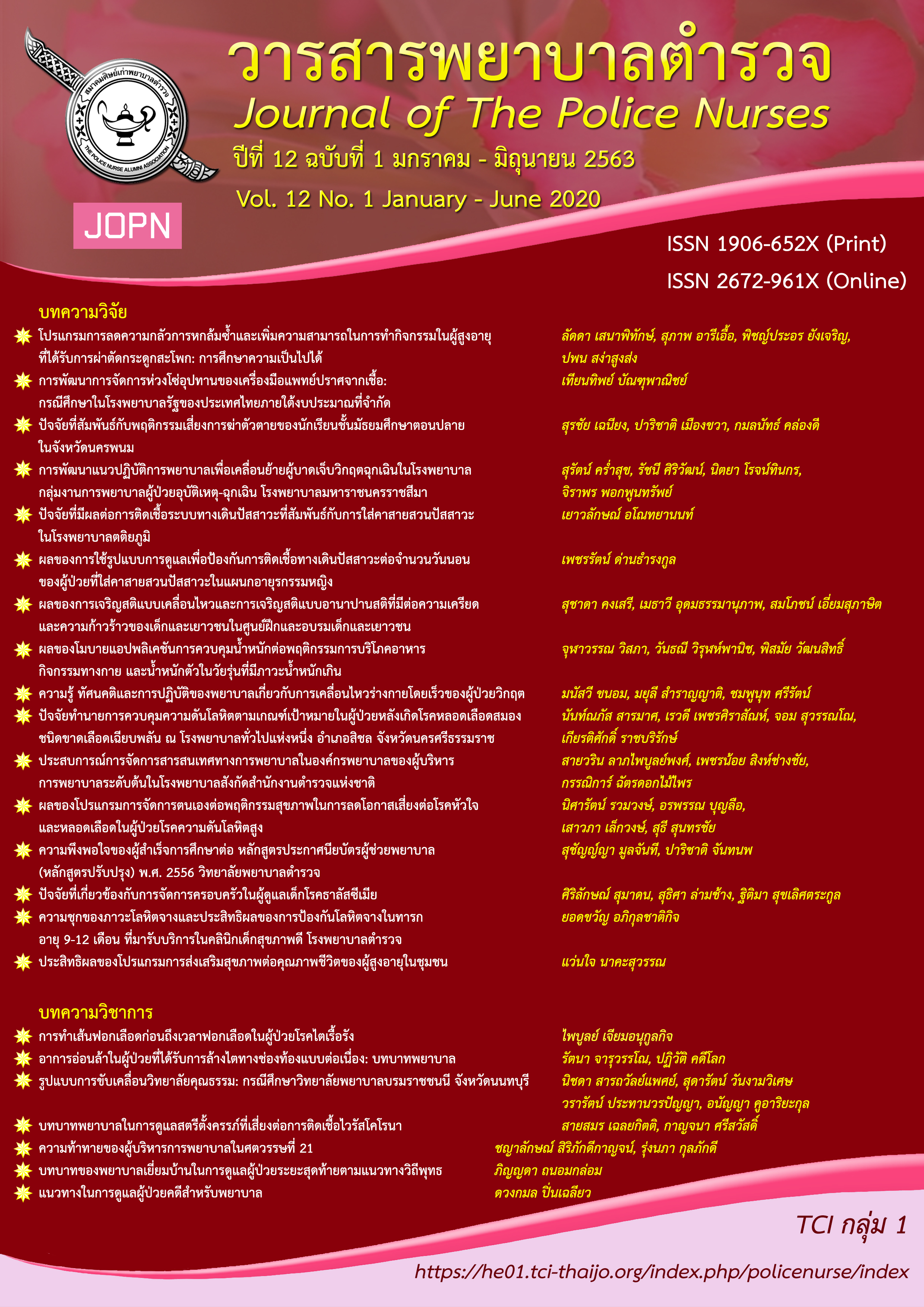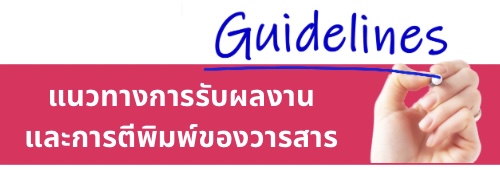ปัจจัยที่สัมพันธ์กับพฤติกรรมเสี่ยงการฆ่าตัวตายของนักเรียนชั้นมัธยมศึกษาตอนปลายในจังหวัดนครพนม
คำสำคัญ:
พฤติกรรมเสี่ยงการฆ่าตัวตาย, การป้องกันการฆ่าตัวตายในวัยรุ่น, นักเรียนชั้นมัธยมศึกษาบทคัดย่อ
การวิจัยแบบพรรณนาหาความสัมพันธ์เพื่อศึกษาปัจจัยที่สัมพันธ์กับพฤติกรรมเสี่ยงในการฆ่าตัวตายของนักเรียนชั้นมัธยมศึกษาตอนปลาย จังหวัดนครพนม ตัวอย่าง คือ นักเรียนชั้นมัธยมศึกษาตอนปลาย จำนวน 132 คน คัดเลือกด้วยการสุ่มอย่างง่าย เครื่องมือที่ใช้ในการวิจัยประกอบด้วยแบบสอบถามข้อมูลส่วนบุคคล เหตุการณ์ในชีวิตเชิงลบ ความครุ่นคิด ภาวะตึงเครียดทางอารมณ์ การสนับสนุนทางสังคม ความเข้มแข็งทางจิตใจ และพฤติกรรมเสี่ยงในการฆ่าตัวตาย ผ่านการตรวจสอบความตรงเชิงเนื้อหา และมีค่าความเที่ยงที่เป็นสัมประสิทธิ์แอลฟาของครอนบาคเท่ากับ .95, .94, .93, .93, .96, และ .86 ตามลำดับ วิเคราะห์ข้อมูลด้วยสถิติบรรยายและสัมประสิทธิ์สหสัมพันธ์ของเพียร์สัน
ผลการวิจัยพบว่า ภาวะตึงเครียดทางอารมณ์ ความครุ่นคิด และเหตุการณ์ในชีวิตเชิงลบ มีความสัมพันธ์ทางบวกกับพฤติกรรมเสี่ยงในการฆ่าตัวตายของนักเรียนชั้นมัธยมศึกษาตอนปลายอย่างมีนัยสำคัญทางสถิติ (r = .36, p = .00, r = .48, p = .00 และ r = .57, p = .00) ส่วนการสนับสนุนทางสังคมและความเข้มแข็งทางจิตใจมีความสัมพันธ์ทางลบกับพฤติกรรมเสี่ยงในการฆ่าตัวตายของนักเรียนชั้นมัธยมศึกษาตอนปลายอย่างมีนัยสำคัญทางสถิติ (r = -.57, p = .00 และ r= -.31, p = .00) พยาบาลและผู้เกี่ยวข้องสามารถนำผลการวิจัยนี้เพื่อเป็นแนวทางการลดปัจจัยเสี่ยงและเพิ่มปัจจัยการป้องกันพฤติกรรมเสี่ยงการฆ่าตัวตายของนักเรียนชั้นมัธยมศึกษาตอนปลายต่อไป
Downloads
เอกสารอ้างอิง
Beck, A. T. (1967). Depression: Causes and treatment. Philadelphia, PA: University.
Bhola, P., Rekha, D. P., Sathyanarayanan, V., Daniel, S., & Thomas, T. (2014). Self-reported suicidality and its predictors among adolescents from a pre-university college in Bangalore, India. Asian journal of psychiatry, 7, 38-45.
Boonyamalik, P. (2005). Epidemiology of adolescent suicidal ideation: Roles of perceived life stress, depressive symptoms, and substance use (Thailand). Unpublished Dissertation, Johns Hopkins University, US.
Chaniang, S., Fongkaew, W., Sethabouppha, H., Lirtmunlikaporn, S., & Schepp K., G. (2017). Development of a suicide prevention program for Thai adolescents (Dissertation, Doctor of Philosophy in Nursing). Faculty of Nursing, Chiang Mai University, Chiang Mai.
Eggert, L. L., Herting, J. R., & Thompson, E. A. (1994). The high school questionnaire: Profile of experiences (HSQ). Seattle, WA: University of Washington, Psychosocial & Community Health Department.
Eggert, L. L., Thompson, E. A., Nicholas, L. J., & Herting, J. R. (1999). Measure of adolescent potential for suicide (MAPS): Measurement document. Seattle: University of Washington, Department of Psychosocial Nursing.
Grotberg, E. (1999). Countering depression with the five building blocks of resilience. Reaching Today’s Youth, 4(1), 66-72.
Liu, R. T., & Miller, I. (2014). Life events and suicidal ideation and behavior: A systematic review. Clinical psychology review, 34(3), 181-192.
Maybery, D. (2003). Incorporating interpersonal events within hassle measurement. Stress and Health: Journal of the International Society for the Investigation of Stress, 19(2), 97-110.
Nintachan, P., Thanoi, W., Sangon, S., & Thaweekoon. T. (2010). Validity and reliability of resilience inventory. (Research reported) Human Development Project, Faculty of Medicine, Mahidol University, Bangkok.
Nolen-Hoeksema, S. (1991). Responses to depression and their effects on the duration of depressive episodes. Journal of abnormal psychology, 100(4), 569.
Polpipatpong, S., Chaimongkol, N., & Vatanasin, S. (2018). Suicide ideation and its associated factors. The Journal of Faculty of Nursing Burapha University, 26(1), 40-49.
Rungsang, B., & Chaimongkol, N. (2017). The prevalence of suicidal ideation among high school students in Thailand and its potential related risk factors. Thai Pharmaceutical and Health Science Journal, 12(1), 31-35.
Samarksavee, N., & Sangon, S. (2015). Factors associated with depression in nursing students. The Journal of Psychiatric Nursing and Mental Health, 29(3), 11-27.
Thanoi, W., Phancharoenworakul, K., Thompson, E. A., Panitrat, R., & Nityasuddhi, D. (2010). Thai adolescent suicide risk behaviors: Testing a model of negative life events, rumination, emotional distress, resilience and social support. Pacific Rim International Journal of Nursing Research, 14(3), 187-202.
Thanoi, W., Pornchaikate Au-Yeong, A., & Ondee, P. (2013). Factors affecting the mental health of the Faculty of Nursing Students, Mahidol University. Thai Journal of Nursing Council, 27, 60-76.
Thorndike, R. M. (1978). Correlational procedures for research. New York, NY: Gardner Press.
Vatanasin, S., Hengudomsub, P., Vatanasin, S., Asarath, T., Chupan, S., & Srisopa, S. (2015). Factors predicting depression among health science students. The Journal of Faculty of Nursing Burapha University, 23(4), 31-47.
World Health Organization (WHO). (2019). World mental health day 2019: Focus on suicide prevention. Retrieved from https://www.who.int/news-room/events/detail/2019/10/10/default-calendar/world-mental-health-day-2019-focus-on-suicide-prevention
Zimet, G. D., Dahlem, N. W., Zimet, S. G., & Farley, G. K. (1988). The multidimensional scale of perceived social support. Journal of personality assessment, 52(1), 30-41.
ดาวน์โหลด
เผยแพร่แล้ว
รูปแบบการอ้างอิง
ฉบับ
ประเภทบทความ
สัญญาอนุญาต
ผลงานที่ได้ตีพิมพ์แล้วจะเป็นลิขสิทธิ์ของวารสารพยาบาลตำรวจ















